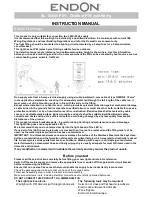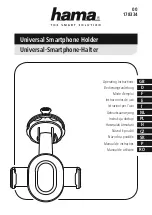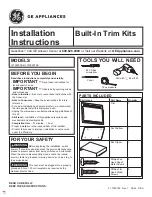
Exposure
Maximum aperture, the smallest f stop at
which the lens can be used is an important
attribute of lens quality. Lenses that are
capable of a very wide maximum aperture
(f1.4, for example) are called “bright”
because they admit plenty of light and “fast”
because they enable the photographer to
work at faster shutter speeds. These lenses
also tend to cost more.
Shutter speed
Cameras use a shutter to control the duration
of exposure. This duration is called the shutter
speed, and is typically a fraction of a second.
Shutter speed ranges are typically designed
to double or halve the speed with each step.
That’s why shutter speeds typically form a
series such as 1, 1/2, 1/4, 1/8, 1/15, 1/30,
1/60, 1/120 and so on.
As with aperture, the choice of shutter speed
affects more than the simple amount of
incoming light. Fast shutter speeds tend
to freeze motion. Slow shutter speeds
tend to exaggerate motion, in the form of blur.
Exposure Value
The basic unit of exposure is the Exposure
Value (EV). An increase of +1 EV represents
a doubling of the incoming light, either by
doubling the time the shutter stays open or
opening up the aperture by one f stop.
Ap shutter = creativity
Each f stop doubles or halves the amount of
light. Each step of shutter speed adjustment
does the same. In this way, you can choose
from several aperture/shutter combinations
that result in the same total value of incoming
light. The result is more than just proper
technical exposure. It’s creative freedom.
For example, in portraits, a combination
of open aperture and fast shutter speed
will tend to blur the background, throwing
more attention on your subject. In sports
photography, the same exposure value
37
An essential part of photography, exposure
determines the amount of incoming light
that reaches the image sensor. Cameras
control exposure by varying the lens opening
(aperture) and the amount of time given to
taking the picture (shutter speed). One of
the creative joys of photography is that
there’s no single combination of aperture
and shutter speed that’s uniquely correct.
Aperture
The word “aperture” refers to both a physical
part of the camera, a circular window inside
the lens that opens and closes, as well as
the number that describes the size of the
opening. The number is also called an “f
number.” This represents the focal length
of the lens divided by the diameter of the
aperture opening. For example, in a 50mm
lens, a 12.5mm opening would have a
number of f4. A 25mm opening would be
f2. The smaller the f number, the wider the
aperture opening.
Aperture openings are typically designed to
increase in discrete steps, called “f stops.”
As you open the aperture, each additional
f stop doubles the amount of incoming light.
Thanks to the geometry of the lens, each f
stop has an f number that’s the square root
of 2 times the previous f number. That’s why
f stops form the characteristic series of f1.4,
f2.0, f2.8, f4, f5.6, f8, f11, f16 and so on.
The choice of f stop affects more than simply
the amount of incoming light. Wide apertures
(low f numbers) result in limited depth of
focus. So the background tends to blur.
Narrow apertures (high f numbers) tend
to keep the entire scene in focus.
photography. In Monitor AF, the
camera is always “pre-focusing”
and doesn’t lock until you press
the shutter halfway. Thanks to pre-
focusing, the camera is faster to
take the shot, improving your chances
of getting exactly the shot you want.
And Monitor AF works together with
Multi-Point AF to intelligently capture
your subject.
•
Continuous AF
is ideal when the
subject may be moving towards or
away from you. It’s especially useful
for unpredictable subjects such as
sports, pets and little kids at play.
Not only is the camera always
“pre-focusing,” but the camera also
continues to track your subject right
up until the moment of exposure.
Flexible Spot AF
Enables you to move the focus spot
almost anywhere in the frame, useful
for tripod shooting.
Manual focus
Manual control when you need it.
Most Sony cameras also include manual
focus for five preset distances, enabling
you to take control. The DSC-H7, H9, and
the
a
100 Digital SLR go beyond this with
continuously variable manual focus.
36
CAMERA CONTROL
CAMERA CONTROL
Taking your best shot
might combine a stopped-down aperture
and a slow shutter speed to create a beautiful
motion blur.
ISO sensitivity
In film, a third method of managing exposure
is the choice of film “speed” or ISO sensitivity.
“Fast” film with a high ISO number is better
suited for shooting in low light, at some cost
in picture grain. In a similar way, digital
cameras offer ISO sensitivity settings. These
use electronic gain to increase the image
brightness at some cost in picture “noise.”
Typically each doubling of ISO sensitivity
rating 1 EV. This enables advanced
photographers to optimize the image by
adjusting shutter, aperture and ISO all
at once!
Auto Exposure (AE)
Of course, Auto Exposure (AE) systems can
make all the exposure decisions for you.
Sophisticated light metering and processing
can measure the light levels from your subject
and choose appropriate exposure settings.
•
Backlight and highlight.
One obvious
difficulty in auto exposure is the case
where your subject is significantly
Continued on page 38.
The camera’s iris controls the size of the lens opening
or “aperture.” A larger aperture (lower “f number”) means
more light can reach the CCD. For a given Exposure
Value, a wider aperture means a faster shutter speed
(shorter exposure time).
Lon
g
er
S
hutter
S
horter
S
hutter
S
m
a
ller
Iri
s
Sa
me Expo
s
ure V
a
lue
L
a
r
g
er
Iri
s
Single AF is ideal for subjects that stand still. (Sample photo for
illustration purposes.)
Continuous AF is ideal for fast moving subjects, particularly ones
moving towards you. The focus keeps tracking until the moment
of exposure. (Note: Continuous AF uses center-point focusing only.)
(Sample photos for illustration purposes.)
power
on
1/2
pre
ss
s
hutter
rele
as
e
d
FOCU
S
LOCK
power
on
1/2
pre
ss
s
hutter
rele
as
e
d
FOC
U
S
LOC
K
power
on
1/2
pre
ss
s
hutter
rele
as
e
d
NO
T FOCU
S
FO
CU
S
L O
C K
Monitor AF pre-focuses the shot to speed your picture-taking
when you want to capture a “decisive moment.” (Sample
photos for illustration purposes.)












































